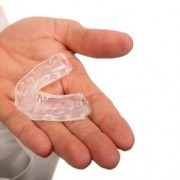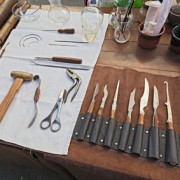How does a root canal work

A simple fix to this bad reputation is understanding the root canal procedure, starting with the anatomy of the tooth. Inside the tooth, under the white enamel and a hard layer called the dentin, is a soft tissue called the pulp. The pulp contains blood vessels, nerves and connective tissue, and helps to grow the root of your tooth during development. In a fully developed tooth, the tooth can survive without the pulp because the tooth continues to be nourished by the tissues surrounding it.
Why is a root canal necessary?
Once the pulp is infected, it must be removed in order to save the tooth. A tooth can become infected for several reasons, including severe tooth decay or a crack or chip in the tooth. The most common way for the pulp to become infected is from an untreated cavity. Failing restorations such as dental fillings and dental crowns can foster bacterial leakage into the dental pulp. Once infected, the dental pulp begins to die and the body’s inflammatory responses set it. The combination of infection and inflammation can cause significant pain. The end result is a toothache.
You can use the following checklist to help you determine whether a root canal may be called for.
- Do hot or cold food or beverages cause a toothache?
- Do you find it excruciatingly painful to eat?
- Is your tooth sore to the touch?
- Do you have a severe toothache?
- Do you have a bump (possibly filled with pus or blood) on your gum?
- Do you have pain that may radiate from one part of your mouth to another or from your mouth into your head or your ear?
What is the root canal procedure like?
Root canal therapy is a complex procedure that requires both skill and experience. Often requiring one or more visits to the dentist. Luckily, you won’t mind seeing your favorite Lafayette Louisiana dentist, Dr. Chauvin, more than once! The first step in the procedure is to take an X-ray to see the shape of the root canals and determine if there are any signs of infection in the surrounding bone. Local anesthesia is then used to numb the area. A drill is used to make small hole through the enamel and dentin, and into the pulp. Using flexible nickel titanium pin-like files, the inside of the canal is shaped. This is done delicately, but thoroughly, to completely remove all traces of infection or debris. This process is performed with a great deal of care in order to minimize damage or trauma to the surrounding ligaments and bone.
The next step is to disinfect and seal the tooth using a special type of heat gun to fill the canal with a material called gutta-percha. Gutta-percha is a natural, biocompatible, anti-bacterial material that expands and seals the hollowed area within the span of about 15 minutes.
If the root canal is not completed on the same day, a temporary filling is placed in the exterior hole in the tooth to keep contaminants out between appointments.
The final step may involve further restoration of the tooth. Because a tooth that needs root canal therapy often is one that has a large filling or extensive decay or other weakness, a crown, crown and post, or other restoration often needs to be placed on the tooth to protect it, prevent it from breaking, and restore it to full function.
If you are experiencing pain or think you may need a root canal give Dr. Chauvin in Lafayette Louisiana a call today.







